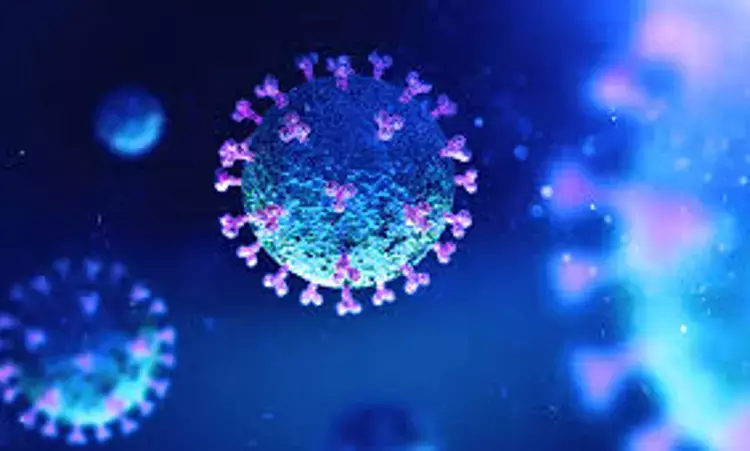- Home
- Medical news & Guidelines
- Anesthesiology
- Cardiology and CTVS
- Critical Care
- Dentistry
- Dermatology
- Diabetes and Endocrinology
- ENT
- Gastroenterology
- Medicine
- Nephrology
- Neurology
- Obstretics-Gynaecology
- Oncology
- Ophthalmology
- Orthopaedics
- Pediatrics-Neonatology
- Psychiatry
- Pulmonology
- Radiology
- Surgery
- Urology
- Laboratory Medicine
- Diet
- Nursing
- Paramedical
- Physiotherapy
- Health news
- Fact Check
- Bone Health Fact Check
- Brain Health Fact Check
- Cancer Related Fact Check
- Child Care Fact Check
- Dental and oral health fact check
- Diabetes and metabolic health fact check
- Diet and Nutrition Fact Check
- Eye and ENT Care Fact Check
- Fitness fact check
- Gut health fact check
- Heart health fact check
- Kidney health fact check
- Medical education fact check
- Men's health fact check
- Respiratory fact check
- Skin and hair care fact check
- Vaccine and Immunization fact check
- Women's health fact check
- AYUSH
- State News
- Andaman and Nicobar Islands
- Andhra Pradesh
- Arunachal Pradesh
- Assam
- Bihar
- Chandigarh
- Chattisgarh
- Dadra and Nagar Haveli
- Daman and Diu
- Delhi
- Goa
- Gujarat
- Haryana
- Himachal Pradesh
- Jammu & Kashmir
- Jharkhand
- Karnataka
- Kerala
- Ladakh
- Lakshadweep
- Madhya Pradesh
- Maharashtra
- Manipur
- Meghalaya
- Mizoram
- Nagaland
- Odisha
- Puducherry
- Punjab
- Rajasthan
- Sikkim
- Tamil Nadu
- Telangana
- Tripura
- Uttar Pradesh
- Uttrakhand
- West Bengal
- Medical Education
- Industry
A rare case of Platypnoea-Orthodeoxia syndrome in COVID-19: BMJ report

Clinical manifestations of COVID-19 which is caused by SARS-CoV2 range from mild upper respiratory symptoms to life-threatening severe acute respiratory distress syndrome (ARDS) requiring invasive mechanical ventilatory support. Dr.Adarsh et al from AIIMS, New Delhi reported a rare case of platypnoea-orthodeoxia syndrome (POS) in a patient recovering from COVID-19 ARDS.
A 46-year old patient presented with history of fever of 7 days and dyspnea of 3 days duration. He had severe breathlessness both in lying down as well as supine position and had grade 4 dyspnoea. His past history was notable for diffuse large B-cell lymphoma for which he received chemotherapy and autologous stem cell transplantation 5 years ago.
Upon examination, patient had tachycardia, tachypnea, hypoxemia with oxygen saturation of 90%-94% on non-rebreathing mask at 10L/min of oxygen. Respiratory system examination revealed normal vesicular breath sounds with bilateral diffuse crepitations. Examination of other systems including CVS was within normal limits.
His blood investigations showed anemia, thrombocytopenia and raised inflammatory markers including CRP, Ferritin, Il-6 and LDH. Throat swab and nasopharyngeal swab for SARS-Cov2 RTPCR was positive. HRCT revealed bilateral diffuse ground-glass opacities throughout lung fields. ECG and ECHO done to rule out pulmonary embolism were normal.
Henceforth, a diagnosis of severe COVID-19 ARDS was made and initiated on treatment with remedesivir, dexamethasone and oxygen support with high flow nasal cannula at 60L/min and 60% FiO2. He also received IV antibiotics for neutropenia and PRBC and platelet transfusion.
On day 3 of admission he showed signs of improvement with decrease in oxygen requirement to 4L/min via nasal prongs. However on day 4 he complained of worsening dyspnea in sitting posture but felt comfortable on assuming supine posture. His SpO2 decreased from 94% in supine posture to 88% in recumbent posture. This finding was confirmed by ABG analysis as evidenced by drop in SaO2 by 7% from sitting to supine position.
Hence a diagnosis of platypnoea-orthodeoxia syndrome was made, he was continued on oxygen support, chest physiotherapy and other supportive measures. His POS improved and oxygen support was withdrawn on day 8 of admission and subsequently discharged.
In COVID-19 there may be preferential involvement of posterior and lower zones of lung parenchyma. Underlying pathophysiology for lung-related POS could be due to severe ventilation-perfusion mismatch in upright posture owing largely to the effect of gravity-dependent blood flow to the basal areas.
Authors conclude- "COVID-19 related POS may be reversible with good response to physiotherapy and supportive measures."
Source: Aayilliath K A, Singh K, Ray A, et al Platypnoea–orthodeoxia syndrome in COVID-19 BMJ Case Reports CP 2021;14:e243016.
MBBS, M. D. Respiratory Medicine
Dr Sravan Kumar V, completed his M. B. B. S from SRMC, Nandyal and M. D. in Respiratory Medicine from the JSS Medical College, Mysore. After completing MD. he worked as Senior resident in Kasturba Hospital, Manipal. He is actively involved in various research activities of the department. Currently he is working as senior resident in Mallareddy medical college for women, Hyderabad. He can be contacted at editorial@medicaldialogues.in.
Dr Kamal Kant Kohli-MBBS, DTCD- a chest specialist with more than 30 years of practice and a flair for writing clinical articles, Dr Kamal Kant Kohli joined Medical Dialogues as a Chief Editor of Medical News. Besides writing articles, as an editor, he proofreads and verifies all the medical content published on Medical Dialogues including those coming from journals, studies,medical conferences,guidelines etc. Email: drkohli@medicaldialogues.in. Contact no. 011-43720751


